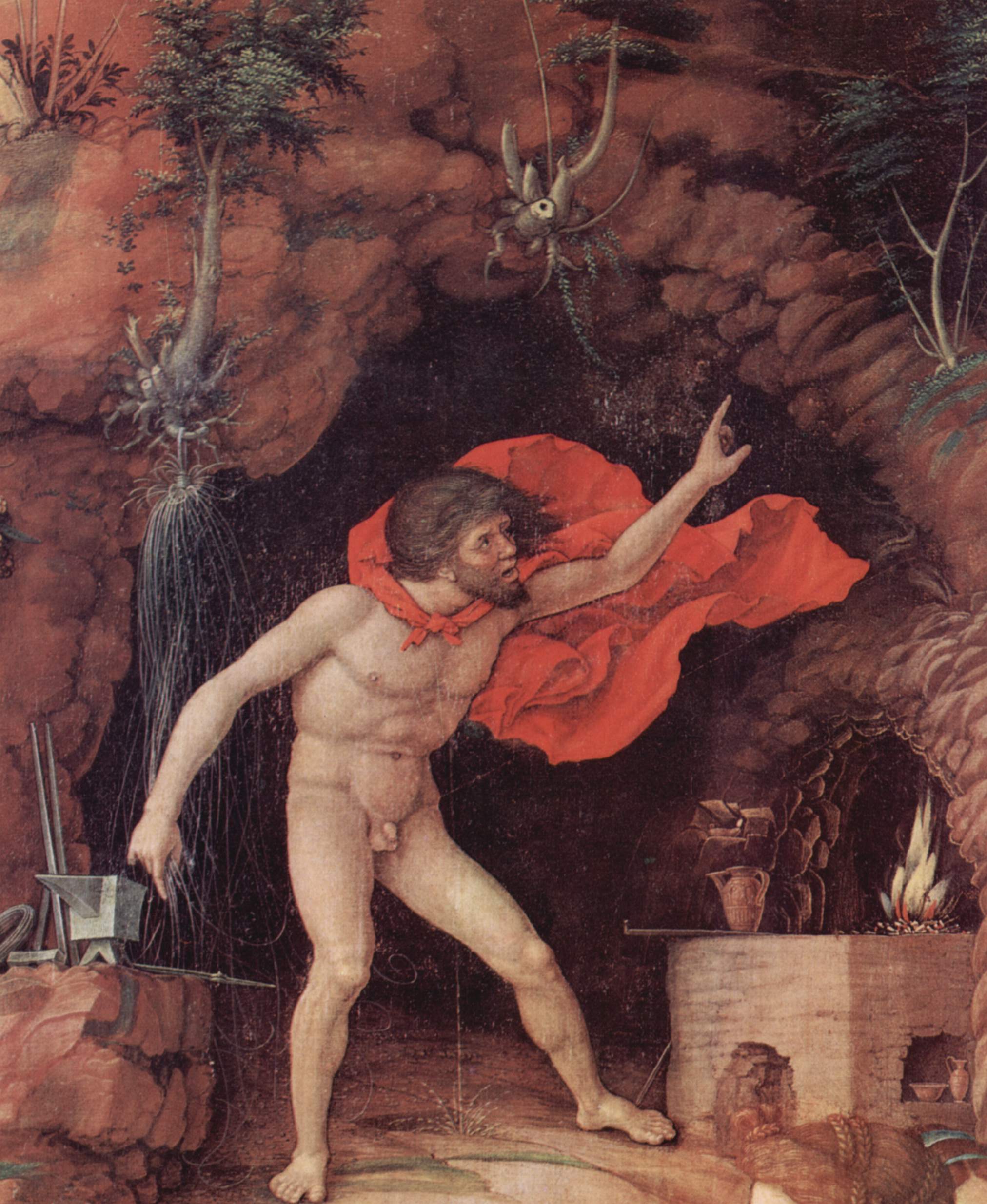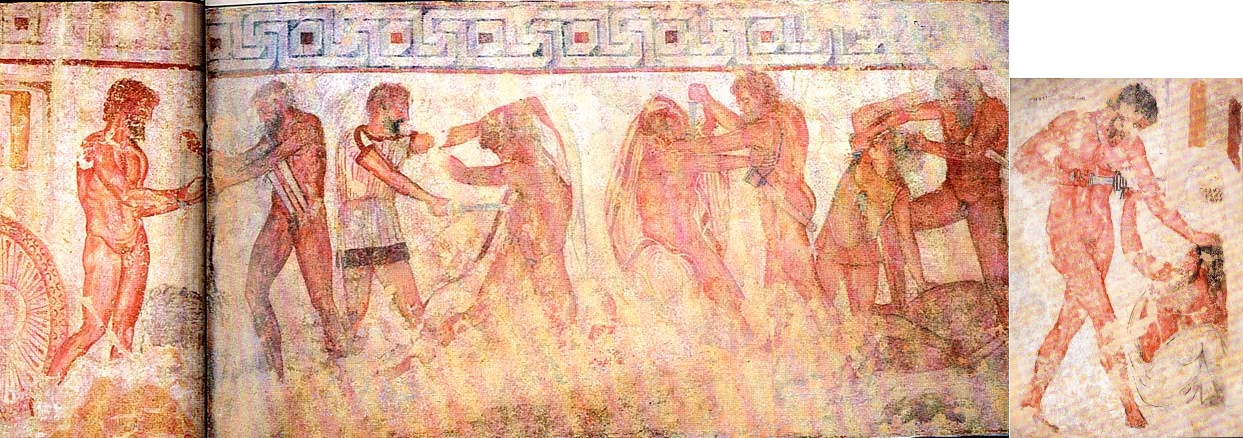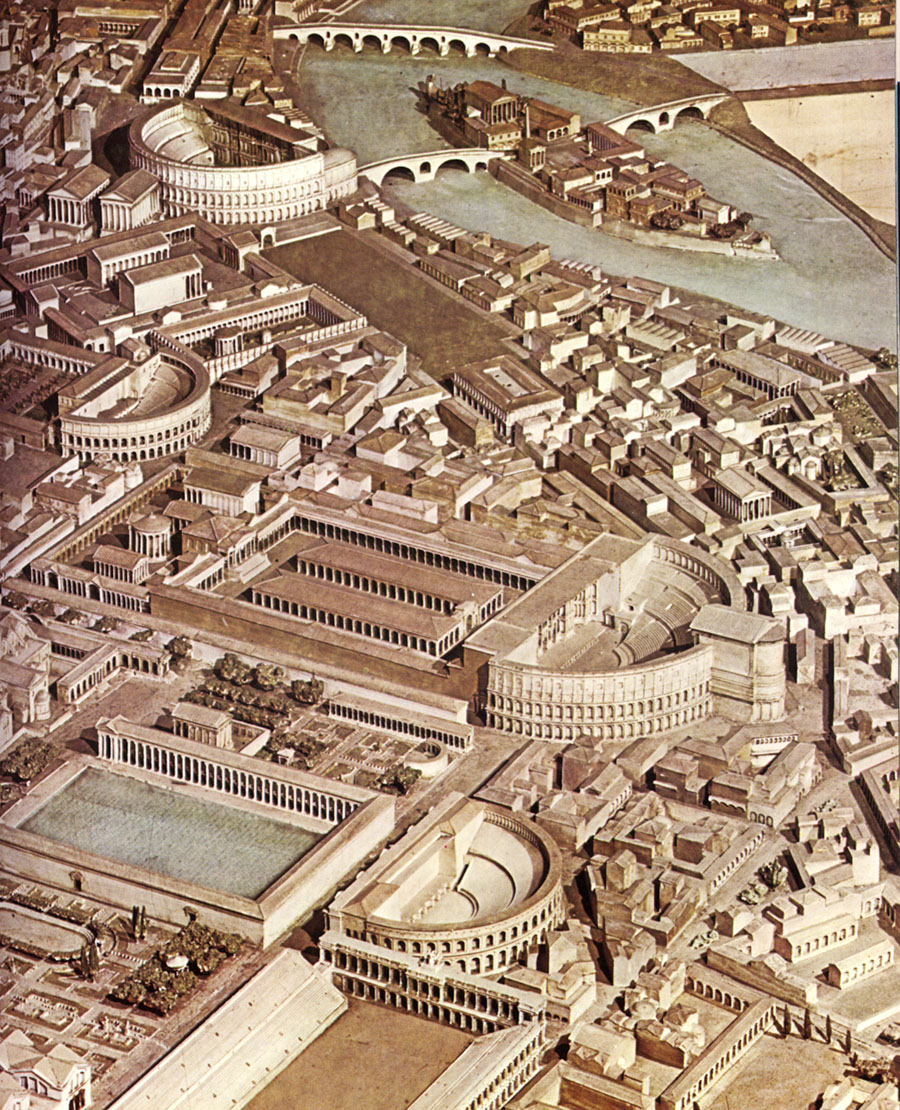|
Comitium
The Comitium () was the original open-air public meeting space of Ancient Rome, and had major religious and prophetic significance. The name comes from the Latin word for "assembly". The Comitium location at the northwest corner of the Roman Forum was later lost in the city's growth and development, but was rediscovered and excavated by archaeologists at the turn of the twentieth century. Some of Rome's earliest monuments, including the speaking platform known as the Rostra, the Columna Maenia, the Graecostasis, and the Tabula Valeria, were part of or associated with the Comitium. The Comitium was the location for much of the political and judicial activity of Rome. It was the meeting place of the Curiate Assembly, the earliest Popular assembly of organised voting divisions of the Republic. Later, during the Roman Republic, the Tribal Assembly and Plebeian Assembly met there. The Comitium was in front of the meeting house of the Roman Senate – the still-existing Curia Julia and ... [...More Info...] [...Related Items...] OR: [Wikipedia] [Google] [Baidu] |
Rostra
The Rostra () was a large platform built in the city of Rome that stood during the republican and imperial periods. Speakers would stand on the rostra and face the north side of the Comitium towards the senate house and deliver orations to those assembled in between. It is often referred to as a ''suggestus'' or ''tribunal'', the first form of which dates back to the Roman Kingdom, the Vulcanal. It derives its name from the six ''rostra'' (plural of '' rostrum'', a warship's ram) which were captured following the victory which ended the Latin War in the Battle of Antium in 338 BC and mounted to its side. Originally, the term meant a single structure located within the Comitium space near the Roman Forum and usually associated with the Senate Curia. It began to be referred to as the ''Rostra Vetera'' ("Elder ''Rostra''") in the imperial age to distinguish it from other later platforms designed for similar purposes which took the name "Rostra" along with its builder's name o ... [...More Info...] [...Related Items...] OR: [Wikipedia] [Google] [Baidu] |
Graecostasis
The Graecostasis () was a platform in the Comitium near the Roman Forum, located to the west of the Rostra. Placed at the southwest end of the Comitium, the platform was the designated spot for all representatives of foreign nations and dignitaries from the Republic and Empire's domain. Visiting outsiders were not permitted within the Senate House or Curia and instead may have stood on this platform while waiting to meet with senators or to hear orations from the Rostra to its east side. Although one scholar has disputed this interpretation and argues that it may have served as a viewing platform for entertainment. Name It got its name from the fact that the first envoys thus honoured were Greeks from ''Massilia''. Overview The Graecostasis was, as Niebuhr remarks, like privileged seats in the hall of a parliamentary assembly. The Stationes Municipiorum, of which Pliny speaks, appear to have been places allotted to municipals for the same purpose. When the sun was seen from ... [...More Info...] [...Related Items...] OR: [Wikipedia] [Google] [Baidu] |
Curia Julia
The Curia Julia () is the third named ''curia'', or senate house, in the ancient city of Rome. It was built in 44 BC, when Julius Caesar replaced Faustus Cornelius Sulla's reconstructed Curia Cornelia, which itself had replaced the Curia Hostilia. Caesar did so to redesign both spaces within the Comitium and the Roman Forum. The alterations within the Comitium reduced the prominence of the Senate and cleared the original space. The work, however, was interrupted by Caesar's assassination at the Curia of Pompey of the Theatre of Pompey, where the Senate had been meeting temporarily while the work was completed. The project was eventually finished by Caesar's heir and successor, Augustus Caesar, in 29 BC. The Curia Julia is one of a handful of Roman structures that survive mostly intact. This is due to its conversion into the basilica of Sant'Adriano al Foro in the 7th century and several later restorations. However, the roof, the upper elevations of the side walls and the rear ... [...More Info...] [...Related Items...] OR: [Wikipedia] [Google] [Baidu] |
Curia Hostilia
The Curia Hostilia was one of the original senate houses or "curiae" of the Roman Republic. It was believed to have begun as a temple where the warring tribes laid down their arms during the reign of Romulus (r. c. 771–717 BC). During the early monarchy, the temple was used by senators acting as a council to the king. Tullus Hostilius (r. 673–641 BC)Livy, ''History of Rome'', i. 30. was believed to have replaced the original structure after fire destroyed the converted temple. It may have held historic significance as the location of an Etruscan mundus and altar. The Lapis Niger, a series of large black marble slabs, was placed over the altar (known as the Volcanal) where a series of monuments was found opposite the Rostra. This curia was enlarged in 80 BC by Lucius Cornelius Sulla during his renovations of the comitium. That building burned down in 52 BC when the supporters of the murdered Publius Clodius Pulcher used it as a pyre to cremate his body. History There has been ... [...More Info...] [...Related Items...] OR: [Wikipedia] [Google] [Baidu] |
Vulcan (mythology)
Vulcan (, in archaically retained spelling also ''Volcanus'', both pronounced ) is the god of fire including the fire of volcanoes, deserts, metalworking and the forge in ancient Roman religion and Roman mythology, myth. He is often depicted with a blacksmith's hammer. The Vulcanalia was the annual Roman festival, festival held August 23 in his honor. His interpretatio graeca, Greek counterpart is Hephaestus, the god of fire and smithery. In Etruscan religion, he is identified with Sethlans (mythology), Sethlans. Vulcan belongs to the most ancient stage of Roman religion: Varro, the ancient Roman scholar and writer, citing the Annales Maximi, records that king Titus Tatius dedicated altars to a series of deities including Vulcan. Etymology The origin of the name is unclear. Roman tradition maintained that it was related to Latin words connected to lightning (), which in turn was thought of as related to flames. This interpretation is supported by Walter William Skeat in his et ... [...More Info...] [...Related Items...] OR: [Wikipedia] [Google] [Baidu] |
Columna Maenia
The Columna Maenia was an honorary column erected in the Comitium of the Roman Republic by Gaius Maenius in 338 BC for his victory over the Latins at the Battle of Antium. Gaius Maenius also adorned the Rostra, with the naval rams (''rostra'' in Latin) of six ships from the Antiate fleet confiscated by Rome. The column was beside the Rostra and the Graecostasis. Some historians believe the column to be from the atrium of Gaius Maenius's home which was sold to Cato and Flaccus as mentioned by Pseudo-Asconius (''Caec''. 50). The column was used as part of an elaborate timing device which determined the final hour of the day when the sun was viewed from the Curia Hostilia The Curia Hostilia was one of the original senate houses or "curiae" of the Roman Republic. It was believed to have begun as a temple where the warring tribes laid down their arms during the reign of Romulus (r. c. 771–717 BC). During the early ... passing the column, moving towards the Carcer. Pliny states ... [...More Info...] [...Related Items...] OR: [Wikipedia] [Google] [Baidu] |
Servius Tullius
Servius Tullius was the legendary sixth king of Rome, and the second of its Etruscan dynasty. He reigned from 578 to 535 BC. Roman and Greek sources describe his servile origins and later marriage to a daughter of Lucius Tarquinius Priscus, Rome's first Etruscan king, who was assassinated in 579 BC. The constitutional basis for his accession is unclear; he is variously described as the first Roman king to accede without election by the Senate, having gained the throne by popular and royal support; and as the first to be elected by the Senate alone, with support of the reigning queen but without recourse to a popular vote. Several traditions describe Servius' father as divine. Livy depicts Servius' mother as a captured Latin princess enslaved by the Romans; her child is chosen as Rome's future king after a ring of fire is seen around his head. The Emperor Claudius discounted such origins and described him as an originally Etruscan mercenary, named Mastarna, who fou ... [...More Info...] [...Related Items...] OR: [Wikipedia] [Google] [Baidu] |
Romulus
Romulus (, ) was the legendary founder and first king of Rome. Various traditions attribute the establishment of many of Rome's oldest legal, political, religious, and social institutions to Romulus and his contemporaries. Although many of these traditions incorporate elements of folklore, and it is not clear to what extent a historical figure underlies the mythical Romulus, the events and institutions ascribed to him were central to the myths surrounding Rome's origins and cultural traditions. Traditional account The myths concerning Romulus involve several distinct episodes and figures, including the miraculous birth and youth of Romulus and his twin brother, Remus; Remus' murder and the founding of Rome; the Rape of the Sabine Women, and the subsequent war with the Sabines; a period of joint rule with Titus Tatius; the establishment of various Roman institutions; the death or apotheosis of Romulus, and the succession of Numa Pompilius. Romulus and Remus According to ... [...More Info...] [...Related Items...] OR: [Wikipedia] [Google] [Baidu] |
Archaeology
Archaeology or archeology is the study of human activity through the recovery and analysis of material culture. The archaeological record consists of Artifact (archaeology), artifacts, architecture, biofact (archaeology), biofacts or ecofacts, archaeological site, sites, and cultural landscapes. Archaeology can be considered both a social science and a branch of the humanities. It is usually considered an independent academic discipline, but may also be classified as part of anthropology (in North America – the four-field approach), history or geography. The discipline involves Survey (archaeology), surveying, Archaeological excavation, excavation, and eventually Post excavation, analysis of data collected, to learn more about the past. In broad scope, archaeology relies on cross-disciplinary research. Archaeologists study human prehistory and history, from the development of the first stone tools at Lomekwi in East Africa 3.3 million years ago up until recent decades. A ... [...More Info...] [...Related Items...] OR: [Wikipedia] [Google] [Baidu] |
Campus Martius
The Campus Martius (Latin for 'Field of Mars'; Italian: ''Campo Marzio'') was a publicly owned area of ancient Rome about in extent. In the Middle Ages, it was the most populous area of Rome. The IV rione of Rome, Campo Marzio, which covers a smaller section of the original area, bears the same name. Antiquity According to Rome's foundation myth, prior to the founding of the city, Rhea Silvia had her twin sons, Romulus and Remus, taken by the King of Alba Longa. The boys were later discarded in the swelling Tiber River, which would later run along the Campus' western boundary. Washing ashore further downriver, the brothers would return decades later to found a new city. Romulus, who became Rome's sole king (after killing his brother Remus), ruled for many years until sometime in the seventh century B.C. As he came to the end of his life, a storm cloud descended upon the center of the open field outside the city's pomerium in order to lift the elderly king to the afterlife.J ... [...More Info...] [...Related Items...] OR: [Wikipedia] [Google] [Baidu] |
Roman Senate
The Roman Senate () was the highest and constituting assembly of ancient Rome and its aristocracy. With different powers throughout its existence it lasted from the first days of the city of Rome (traditionally founded in 753 BC) as the Senate of the Roman Kingdom, to the Senate of the Roman Republic and Senate of the Roman Empire and eventually the Byzantine Senate of the Eastern Roman Empire, existing well into the post-classical era and Middle Ages. During the days of the Roman Kingdom, the Senate was generally little more than an advisory council to the king. However, as Rome was an electoral monarchy, the Senate also elected new Roman kings. The last king of Rome, Lucius Tarquinius Superbus, was overthrown following a coup d'état led by Lucius Junius Brutus, who founded the Roman Republic. During the early Republic, the Senate was politically weak, while the various executive Roman magistrates who appointed the senators for life (or until expulsion by Roma ... [...More Info...] [...Related Items...] OR: [Wikipedia] [Google] [Baidu] |






